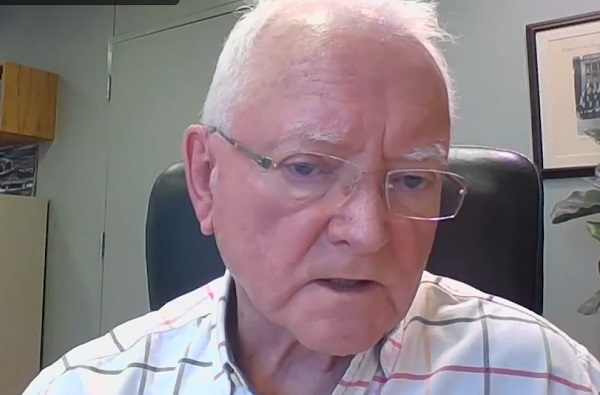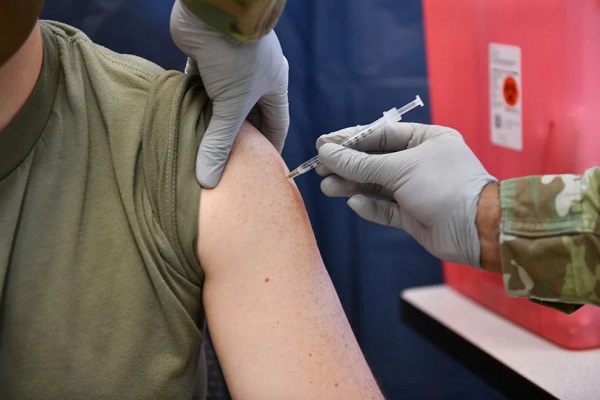2025 Federal Election
Don’t double-down on net zero again

From the Fraser Institute
In the preamble to the Paris Agreement, world leaders loftily declared they would keep temperature rises “well below 2°C” and perhaps even under 1.5°C. That was never on the cards—it would have required the world’s economies to effectively come to a grinding halt.
The truth is that the “net zero” green agenda, based on massive subsidies and expensive legislation, will likely cost more than CAD$38 trillion per year across the century, making it utterly unattractive to voters in almost every nation on Earth.
When President Trump withdrew the United States from the Paris Climate Agreement for the first time in 2017, then-Canadian Prime Minister Justin Trudeau was quick to claim the moral high ground, declaring that “we will continue to work with our domestic and international partners to drive progress on one of the greatest challenges we face as a world.”
Trudeau has now been swept from the stage. On his first day back in office, President Trump signed an executive order that again begins the formal, twelve-month-long process of withdrawing the United States from the Paris Agreement.
It will be tempting for Canada to step anew into the void left by the United States. But if the goal is to make effective climate policy, whoever is Canada’s prime minister needs to avoid empty virtue signaling. It would be easy for Canada to declare again that it’ll form a “coalition of the willing” with Europe. The truth is that, just like last time, that approach would do next to nothing for the planet.
Climate summits have generated vast amounts of attention and breathless reporting giving the impression that they are crucial to the planet’s survival. Scratch the surface, and the results are far less impressive. In 2021, the world promised to phase-down coal. Since then, global coal consumption has only gone up. Virtually every summit has promised to cut emissions but they’ve increased almost every single year, and 2024 reached a new high.
Way before the Paris Agreement was inked, the Kyoto Protocol was once sold as a key part of the solution to global warming. Yet studies show it achieved virtually nothing for climate change.
In the preamble to the Paris Agreement, world leaders loftily declared they would keep temperature rises “well below 2°C” and perhaps even under 1.5°C. That was never on the cards—it would have required the world’s economies to effectively come to a grinding halt.
The truth is that the “net zero” green agenda, based on massive subsidies and expensive legislation, will likely cost more than CAD$38 trillion per year across the century, making it utterly unattractive to voters in almost every nation on Earth.
The awkward reality is that emissions from Canada, the EU, and other countries pursuing climate policies matter little in the 21st century. Canada likely only makes up about 1.5 per cent of the world’s emissions. Add together Canada’s output with that of every single country of the rich-world OECD, and this only makes up about one-fifth of global emissions this century, using the United Nations’ ‘middle of the road’ forecast. The other four-fifths of emissions come mostly from China, India and Africa.
Even if wealthy countries like Canada impoverish themselves, the result is tiny — run the UN’s standard climate model with and without Canada going net-zero in 2050, and the difference is immeasurable even in 2100. Moreover, much of the production and emissions just move to the Global South—and even less is achieved.

One good example of this is the United Kingdom, which—like Prime Minister Trudeau once did—has leaned into climate policies, suggesting it would lead the efforts for strong climate agreements. British families are paying a heavy price for their government going farther than almost any other in pursuing the climate agenda: just the inflation-adjusted electricity price, weighted across households and industry, has tripled from 2003 to 2023, mostly because of climate policies. This need not have been so: the US electricity price has remained almost unchanged over the same period.
The effect on families is devastating. Had prices stayed at 2003 levels, an average family-of-four would now be spending CAD$3,380 on electricity—which includes indirect industry costs. Instead, it now pays $9,740 per year.
Rising electricity costs make investment less attractive: European businesses pay triple US electricity costs, and nearly two-thirds of European companies say energy prices are now a major impediment to investment.
The Paris Treaty approach is fundamentally flawed. Carbon emissions continue to grow because cheap, reliable power, mostly from fossil fuels, drives economic growth. Wealthy countries like Canada, the US, and European Union members have started to cut emissions—often by shifting production elsewhere—but the rest of the world remains focused on eradicating poverty.
Poor countries will rightly reject making carbon cuts unless there is a huge flow of “climate aid” from rich nations, and want trillions of US dollars per year. That won’t happen. The new US government will not pay, and the other rich countries cannot foot the bill alone.
Without these huge transfers of wealth, China, India and many other developing countries will disavow expensive climate policies, too. This potentially leaves a rag-tag group led by a few Western European progressive nations, which can scarcely afford their own policies and have no ability to pay off everyone else.
When the United States withdrew from the Paris Agreement in 2017, Canada’s doubling down on the Paris Treaty sent the signal that it would be worthwhile spending hundreds of trillions of dollars to make no real difference to temperatures. We fool ourselves if we pretend that doing so for a second time will help the planet.
We need to realize that fixing climate change isn’t about sanctimonious summits, lofty speeches, and bluster. In coming weeks I’ll outline the case for efficient policies like innovation, adaptation and prosperity.
2025 Federal Election
I don’t believe these polls!

 Dan McTeague
Dan McTeague
Cards on the table, I’m skeptical of the current state of the polling in this election. My sense is that Mark Carney and the Liberals’ numbers are, at least in part, a byproduct of sympathetic pollsters over-sampling their key demographics, and those being trumpeted to high heaven by the publicly-funded media. That, coupled with voters’ justifiable annoyance at Donald Trump’s “51st State” cracks and tariff threats, has contributed to an illusion of enthusiasm, a sense that they are running away with this thing.
That said, one polling data point has struck me as being both real and important. A recent Abacus Data poll showed that, when you cut out all the distractions, Canadians’ biggest concern remains our inflated cost of living. And that is an issue which clearly favors Poilievre and the Conservatives.
That’s because the dire state of our economy can largely be laid at the feet of the Liberals, who’ve been running the show for the past decade. Yes, they’ve made a change at the top, but not much of one. On top of being a globe-trotting member of the “Green” Elite, and champion of environmentalist banking, Mark Carney was a Liberal advisor for years, a key part of the Trudeau “brain trust” — trust me, I use that term loosely — that cooked up a whole raft of economy smothering “Green” policies which have done nothing to reduce global carbon emissions, but have succeeded in lightening our wallets.
Under Trudeau, our annual GDP growth noticeably shifted from the 3% range towards the end of the Harper years to the 1% range more recently. Household debt-to-income ratios rose steadily in the same period, while real household spending per capita dropped 2-3% below 2019 levels by 2024, as costs and interest rates went up. Disposable income growth has been outpaced by inflation and taxes, and bankruptcy filings have risen 40% since just 2019.
Canadian food prices have exploded by 35-40%, with family spending up over 50% over the past decade. Consequently, food insecurity rose to 23% by 2023, from around 8% in 2015, and Food Banks Canada has reported a 78% surge in usage from 2019 to 2023.
Meanwhile, Canada’s national debt, which was just over $600 billion when Justin Trudeau was handed the federal credit card, has roughly doubled, reaching over $1.2 trillion by the time he left. And provincial debt has risen by about $1 trillion in the same period.
It’s a frightening financial snapshot. And many of these negatives can be attributed to the Liberals’ war on oil and gas, which remains — however much Carney might wish otherwise — the backbone of our national economy.
So much of the Liberals’ time and effort in government has been spent kneecapping the resource sector, and for purely ideological reasons. From Bill C-48, the Oil Tanker Moratorium Act of 2019, which significantly reduces our ability to sell oil and gas abroad, to Bill C-69, which added mountains of red tape for infrastructure projects, so much so that it was nicknamed the “No More Pipelines” Act.
You’ll remember that the Supreme Court ruled the “No More Pipelines” act largely unconstitutional two years ago. Even so, Carney recently said he has no intention of repealing it, prompting Poilievre to tweet out, “This Liberal law blocked BILLIONS of dollars of investment in oil & gas projects, pipelines, LNG plants, mines, and so much more,” with an excellent infographic attached, listing the various cancelled energy projects throughout Canada since the Liberals came to power.
And then of course, there’s the Consumer Carbon Tax, which started out at $20 per tonne of CO2 emitted in 2019, small enough that many Canadians barely noticed they were paying it, but increased every year until it hit $80 per tonne.
By that point it became so noticeable and unpopular that the Liberals felt they had no choice but to “cancel” it (“zero it out” is more accurate), before it could reach the $170 by 2030 which they’d planned. Still, it remains on the books, ready to be raised again, without a vote, if Carney so chooses.
Even if he doesn’t, Carney has doubled down on the Industrial Carbon Tax. While the Liberals claim this is an improvement because it isn’t paid by working Canadians, only by big evil “polluters.” Of course, they said something similar about the Consumer Tax, that by some financial wizardry, we regular folks would get back more than we paid in, which turned out to be total bunk.
Meanwhile, the Industrial Tax makes our lives more expensive in essentially the same way as the Consumer Tax. It raises the cost of doing business, of heating our homes, of filling up our car, of our grocery bills. It just does so by a less direct route, by taxing businesses instead of individuals, so that we pay when the price of goods and services goes up in response.
The Industrial Carbon Tax, much like Trudeau’s Clean Fuel Regulations, is ultimately a hidden tax, and that suits Carney just fine. He’d prefer that we not know who to blame as our cost of living skyrockets.
The Liberal Party’s economic record over since 2015 has been atrocious, and it will be no different under Mark Carney. He is complicit, and he continues to support policies which would make us poorer, like Bill S-243, the “Climate-Aligned Finance Act,” which Carney testified before the Senate in support of last year. That bill sought to make it nearly impossible for banks to invest in, or loan money to, oil and gas projects in Canada, and tried to force financial institutions to appoint board members ideologically opposed to fossil fuels.
Canada needs to change course, and soon. As things stand, it will be tough for even a good captain to navigate us through the rough seas the Liberals have steered us into over the past ten years. A few more, and with Mark Carney at the helm, might make that impossible.
Dan McTeague is President of Canadians for Affordable Energy.
Support Dan’s Work to Keep Canadian Energy Affordable!
Canadians for Affordable Energy is run by Dan McTeague, former MP and founder of Gas Wizard. We stand up and fight for more affordable energy.
2025 Federal Election
BLOCKBUSTER REPORT: Canada’s ties to Wuhan Institute of Virology and creation of COVID uncovered by Sam Cooper of The Bureau

Exclusive: CSIS Told Us We Were Infected at Wuhan Games, Soldier Says—But Ottawa Kept It Quiet
 Sam Cooper
Sam Cooper
CAF member has come forward with explosive testimony that Canadian intelligence agents assessed soldiers were infected with COVID-19 at the 2019 Wuhan Games—but the findings were buried in Ottawa.
“I was in Wuhan in the fall of 2019 at the World Military Games. A significant number of the team, and I myself, contracted COVID and became very, very ill.”
With that statement, delivered in confidential testimony to The Bureau, a Canadian Armed Forces member added his voice to one of the most powerful emerging revelations in the global search for the origins of COVID-19. His account closely matches the U.S. Department of Defense’s newly declassified conclusion that seven American soldiers fell ill with COVID-like symptoms during the same October 2019 military competition in Wuhan, China.
The American military investigation was ordered by Congress in 2021 but kept from the public until a Freedom of Information Act lawsuit forced its release. Critics now say the Biden administration suppressed the findings, which suggest U.S. intelligence agencies had early evidence of a viral outbreak tied to the Games.
The Canadian soldier believes voters deserve to know that CSIS—Ottawa’s civilian intelligence agency—also assessed that Canadian military athletes were infected in Wuhan, and that the Trudeau government chose not to inform the public. “Yes, CSIS and a number of other such organizations did interview members of the contingent,” he said of his experience upon returning to Canada. “They were professional and concerned only with facts. But when completing their interviews, they let it be known that their work and report would be suppressed.”
The Bureau has independently confirmed, through multiple confidential interviews, that Canadian intelligence did in fact interview military athletes and concluded they had experienced COVID-like symptoms while in Wuhan.
“The story of U.S. athletes becoming very sick while in Wuhan, or shortly after returning, and the institutional cover-up since—it mirrors exactly what Canadian Forces athletes experienced,” the CAF member explained.
“I say cover-up because, while it would have been difficult to know at the time that we had COVID, the timeline and intelligence were well known by May [2020.] Still, neither operational commanders or CAF health officials were willing or interested to conduct a fulsome assessment of the contingent.”
His testimony now stands alongside a torrent of new disclosures—including a bombshell release from the U.S. Defense Intelligence Agency—that together appear to draw a new, starker picture of what happened in Wuhan and how it may be linked to dangerous Canadian research.
The DIA documents, made public only after a Freedom of Information Act lawsuit by US Right to Know, include a 46-slide classified briefing dated June 25, 2020. It concludes that COVID-19 is most consistent with a lab-engineered virus created at the Wuhan Institute of Virology (WIV), likely under the direction of Dr. Shi Zhengli.
“Hypothesis: In mid-2019, one of the not fully characterized Bat-CoV-X chimeric viruses escaped from the WIV facilities and began infecting civilians in the city of Wuhan,” the document says.
In chronology, the DIA report focuses on a 2008 study co-authored by Dr. Shi, which showed that bat coronaviruses could be altered to infect human cells. The study described how swapping small genetic pieces in the virus allowed it to attach to human receptors. This work laid the foundation for later experiments in Wuhan that involved creating new hybrid viruses.
From 2011 to 2015, Dr. Shi’s team conducted a sweeping field study in Yunnan province, where they collected over 600 samples from multiple bat species living in caves and forested regions. The viruses were brought back to Wuhan and stored at the Institute—forming the core of a growing coronavirus research bank.
Shi’s team engineered a full copy of a virus called WIV1—a clone developed between 2015 and 2017—and then swapped in spike proteins from other bat coronaviruses—creating entirely new lab-made, or “chimeric,” viruses. According to U.S. intelligence analysts, this was one of the key human-made modifications that allowed the virus to more effectively bind to human cells—marking a potential step toward weaponizing the bat virus.
During this same 2015–2017 window, Chinese scientists also began experimenting with dangerous pathogens like SARS and MERS. They inserted a genetic feature known as a furin cleavage site—another significant modification known to increase a virus’s ability to infect human cells. These modified viruses were tested both in lab dishes and in live animals. The experiments were conducted under BSL-2 safety conditions, which in China are less strict than in the United States. According to U.S. military intelligence, Chinese BSL-2 labs have a documented history of leaks.
In this process, between 2017 and 2019, scientists at the Wuhan lab likely created a new virus called Bat-CoV-X using a secret bat virus genome as the base, the intelligence slide says. They continued building more versions by swapping in different genetic parts—especially the pieces that help the virus bind to human cells—and adding the furin cleavage site. These chimeric viruses were again tested in the lab and in animals throughout 2018 and into 2019, just before the outbreak began.
The final readable slide in the redacted DIA document concluded: “The molecular biology capabilities of WIV and the genome assessment are consistent with the hypothesis that SARS-CoV-2 was a lab-engineered virus that was part of a bank of chimeric viruses in Zhen-Li Shi’s laboratory at WIV that escaped from containment.”
By early 2020—when athletes around the world, including Canadian and U.S. soldiers, had already returned to their home countries with COVID-19-like infections—the Wuhan Institute of Virology and other Chinese government-controlled agencies began publishing studies promoting a natural zoonotic origin for SARS-CoV-2 and deflecting scrutiny from any laboratory origin theory.
The Canadian–Chinese Lab Connection
What makes the Defense Intelligence Agency’s timeline bombshell especially troubling for Canada is how closely it aligns with The Bureau’s earlier reporting on Dr. Xiangguo Qiu. Dr. Qiu was the now-expelled head of special pathogens at Canada’s National Microbiology Laboratory in Winnipeg. Canadian intelligence documents reviewed by The Bureau confirm that Qiu had an active working relationship with Dr. Shi Zhengli, the Wuhan lab, and the People’s Liberation Army, beginning in 2017. Together, they co-led research on Ebola and synthetic bat coronaviruses—projects funded by the Chinese Academy of Sciences and supported by CanSino Biologics, a state-owned company tied to China’s military.
In a previous interview with The Bureau, Dr. Asher said he could not reveal the classified intelligence his team reviewed. However, he made clear that his State Department investigators were deeply concerned that Beijing was using the Winnipeg lab for military intelligence gathering and bioweapons research.
“The Wuhan Institute of Virology wasn’t just a government lab creating novel pathogens—it was and is a civil-military fusion hub that had a biological intelligence operational collection mission ensconced in its web of nefarious activities,” Asher said, including “illicitly acquiring Ebola and doing research on bio-synthesis of this massively deadly pathogen, to make it super contagious.”
On April 10, Asher posted the newly released DIA report to social media, writing simply: “Read and weep.”
“I told people in the media and wrote repeatedly four years ago that, from the early days, U.S. Department of Defense and national lab analysts had highlighted the probability that COVID was created with synthetic biology,” Asher wrote. “Well now, thanks to US Right to Know, you can see one of several presentations on this likelihood from DIA.”
Although there is no evidence that Dr. Qiu transferred any bat coronavirus samples or physical materials related to the WIV bat project, the newly released U.S. intelligence raises the possibility that her intellectual contributions from Canada may have been more central than previously realized. At minimum, the documents confirm that Qiu was operating inside one of the world’s most advanced virology labs in Canada while simultaneously collaborating with the same Wuhan scientists now identified in the U.S. report as architects of a chimeric virus bank.
The documents also confirm that Wuhan scientists aggressively pressured Canadian researchers to share samples with the Wuhan Institute of Virology, and that Chinese military agents repeatedly breached security protocols at the Winnipeg lab—roaming unchecked through restricted areas—and clandestinely transported biological materials in and out while working with Dr. Qiu and her husband.
In detail, what the CSIS intelligence records show is that Dr. Qiu—a senior scientist at Canada’s National Microbiology Laboratory—began building formal ties with the Wuhan Institute and the Chinese Academy of Sciences in the years leading up to the pandemic. She applied to join the Thousand Talents Plan in 2017, a covert Chinese government program designed to recruit foreign experts. CSIS determined that the Wuhan Institute co-sponsored her application and that Qiu began receiving undisclosed funding through a secret Chinese bank account. She worked closely with Dr. Shi Zhengli, China’s top bat virus expert.
In June 2018, Dr. Qiu applied for a “high-end” research project through the Chinese Academy of Sciences, an institution CSIS describes as working closely with the People’s Liberation Army on dual-use biotechnology. This suggests a turning point: Dr. Qiu moved from academic collaboration to direct involvement in China’s military-linked pathogen research programs, effectively bridging Canada’s Winnipeg Lab with the Wuhan Institute of Virology on synthetic bat virus research.
Between 2018 and 2019, Dr. Qiu co-led two classified research streams with Dr. Shi at the Wuhan lab: one focused on gain-of-function experiments with Ebola, aimed at studying how the virus could be made more contagious; the second on synthetic bat coronavirus construction, building lab-made viruses.
In October 2018, a Wuhan lab technician referred to as “Individual 2” in CSIS reports was caught attempting to remove 10 unlabelled test tubes from the Winnipeg lab. While the contents have never been disclosed, the incident triggered internal alarms over unauthorized transfers. Then, in March 2019, Dr. Qiu and another Winnipeg scientist shipped live samples of Ebola, Nipah, and specially adapted virus strains to the Wuhan Institute of Virology. These transfers occurred just months before the U.S. intelligence timeline suggests a lab-engineered virus escaped containment in Wuhan.
While the Ebola and Nipah viruses she is known to have transferred are not coronaviruses, her scientific standing, access to biocontainment environments, and coordination with Dr. Shi suggest her work likely supported, directly or indirectly, the scientific environment that produced the agent of the COVID-19 pandemic. If the escape occurred in mid-2019, it would place Qiu and her prior visits to WIV in the direct window of critical research activities.
For Canadian readers and voters—as new revelations emerge about Chinese interference and apparent favouritism toward the Liberal government under Mark Carney—the Trudeau government’s failure to act on early intelligence warnings demands renewed scrutiny.
Canada’s intelligence agency raised red flags about Dr. Xiangguo Qiu’s activities as early as 2018. Yet collaboration with Chinese military-linked laboratories continued right up to the brink of the COVID-19 outbreak. Samples were transferred. Funding continued to flow. Warnings were dismissed. No one was held accountable.
For the Canadian soldier who came forward, at a minimum, Canadians should know more about China’s suspected role in the creation of the bat coronavirus and cover-up, and whether Canadian scientific capacity played a direct or indirect role.
“I have no special insights as to links with the Winnipeg lab, CCP/MSS infiltration there, or how this tied to COVID-19,” the Canadian soldier said. “That said, considering the vast, deep, and broad collusion between Canadian officials and organs of the PRC, nothing should be dismissed.”
The Bureau is a reader-supported publication.
To receive new posts and support my work, consider becoming a free or paid subscriber.
Invite your friends and earn rewards
-

 2025 Federal Election19 hours ago
2025 Federal Election19 hours agoLiberals Replace Candidate Embroiled in Election Interference Scandal with Board Member of School Flagged in Canada’s Election Interference Inquiry
-

 Alberta18 hours ago
Alberta18 hours agoIs Canada’s Federation Fair?
-

 Alberta17 hours ago
Alberta17 hours agoProvince introducing “Patient-Focused Funding Model” to fund acute care in Alberta
-

 espionage20 hours ago
espionage20 hours agoU.S. Experts Warn Canada Is Losing the Fight Against PRC Criminal Networks—Washington Has Run Out of Patience
-

 Alberta13 hours ago
Alberta13 hours agoMedical regulator stops short of revoking license of Alberta doctor skeptic of COVID vaccine
-

 Automotive21 hours ago
Automotive21 hours agoTesla Vandals Keep Running Into The Same Problem … Cameras
-

 International14 hours ago
International14 hours agoUN committee urges Canada to repeal euthanasia for non-terminally ill patients
-

 COVID-197 hours ago
COVID-197 hours agoMassive new study links COVID jabs to higher risk of myocarditis, stroke, artery disease






